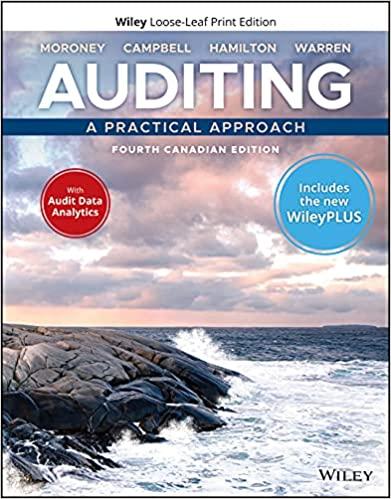The auditor of a consumer goods business is working on a clients allowance for doubtful accounts. The
Question:
The auditor of a consumer goods business is working on a client’s allowance for doubtful accounts. The auditor asks management what has changed with respect to accounts receivable over the prior year.
The client responds that their customer composition has remained the same; therefore, they estimate a reasonable allowance would be 30 percent of accounts receivable over 90 days. The auditor reviews the preliminary accounts receivable balance and compares it with the prior year’s, and notes while there has been a slight increase, it is not significant. As the auditor reviews the accounts receivable detail, she notes that much of the balance that is over 90 days due was also outstanding the prior year. When the auditor asks management about these accounts, management explains some of the customers are just very slow paying but they still believe they will get paid. The auditor plans to recalculate the allowance for doubtful accounts at 30 percent, similar to last year. But she wonders if it should be changed to 50 percent given that the outstanding balances are so old. The auditor feels she is now an expert at auditing accounts receivable because she has audited this section on her past two engagements.
Required Discuss the biases in this situation that may be impairing the auditor’s professional scepticism.
Step by Step Answer:

Auditing A Practical Approach
ISBN: 9781119709497
4th Canadian Edition
Authors: Robyn Moroney, Fiona Campbell, Jane Hamilton, Valerie Warren





